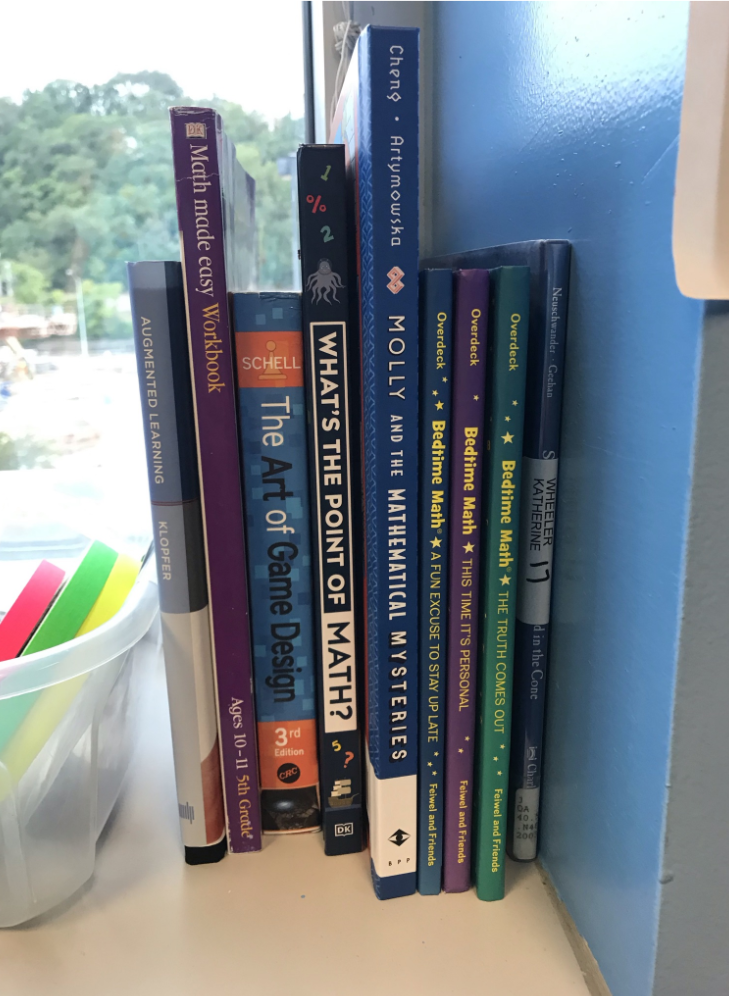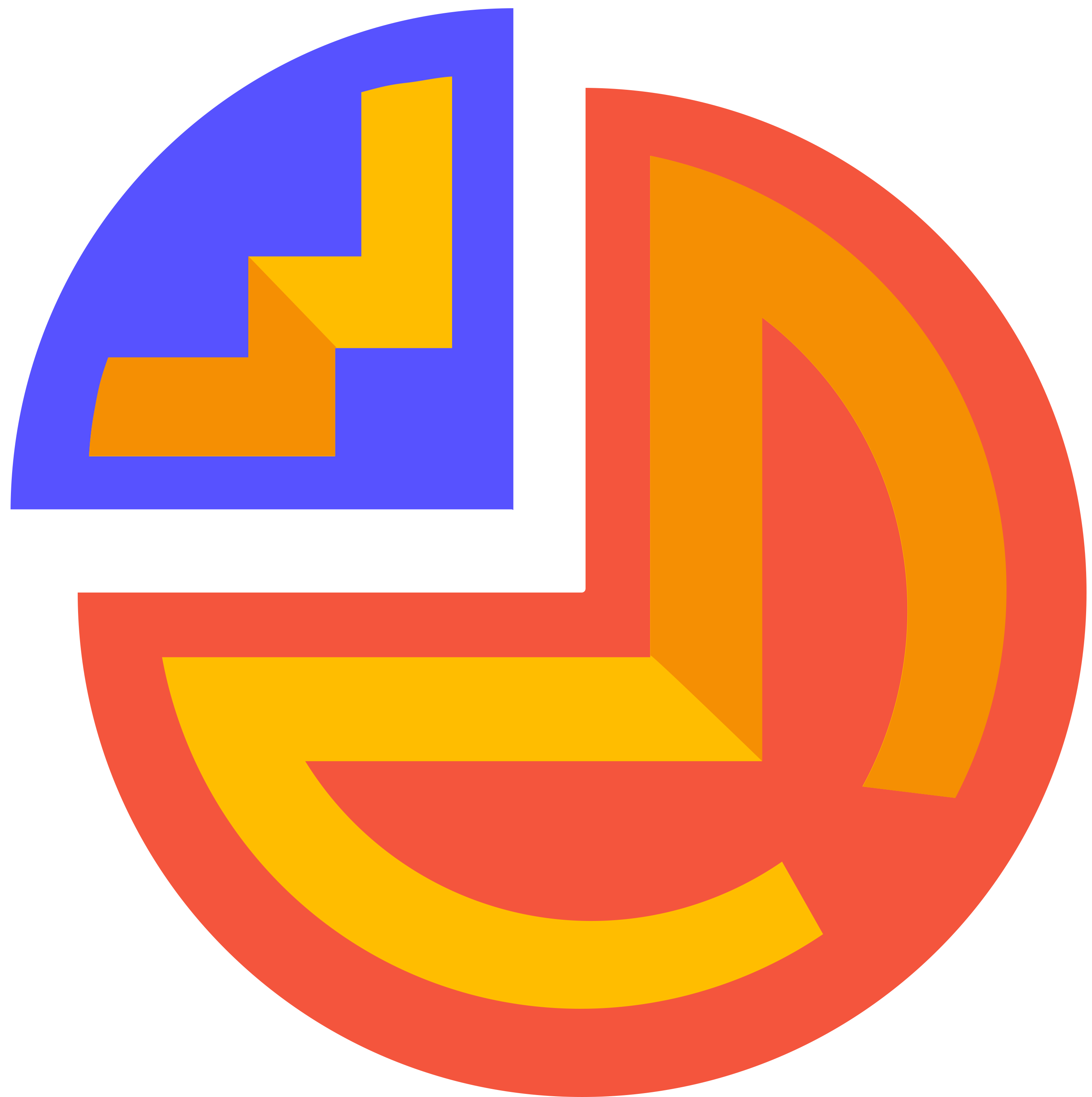Week 3: Quarters
Hi there! This is Week 3! We had Quarters this week! Quarter means we are in the 1/4 of the semester. As you can see in Blog 2, we have a project room. So this Wednesday, we had faculties in ETC walk round different project rooms and see how we are doing and give suggestions to us. Every group of teacher have 15 mins to chat with us, then leave to next project room, and the next group of teacher come and chat with us.
Do you have a clearer picture of our Quarters? Cool! Let’s take a deeper look at our Quarter Week!
What We Presented
1. Math walk on the ground
As Mike and Dave suggested, we made a indoor example of Math Walks to show our audience the inspiration of this project better.
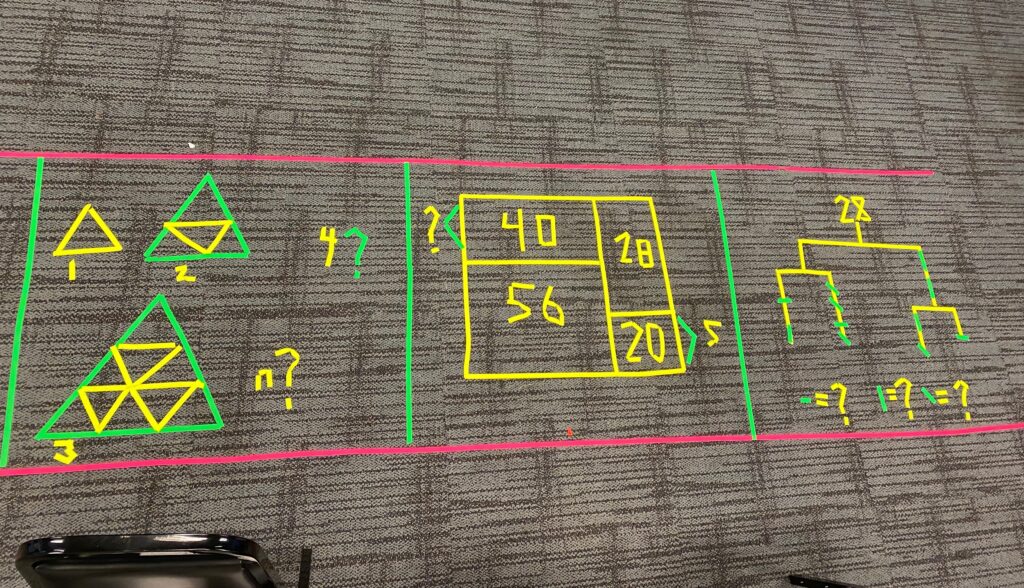
2. Two game design ideas:
Do you remember we have 4 ideas for each of the four Math concepts? We presented them during Monday faculty meeting. Tom and Mike commented that they didn’t see Walk or Wander in those games, which made WanderMath or Math Walk missing. Also, Building Your House is quite easy for 4th-5th graders to do and Making Your Fence is too open ended. Thus, we added Walking concept into the other two games: Tightrope design and Fractions Cooking design and presented these two during the Quarter.
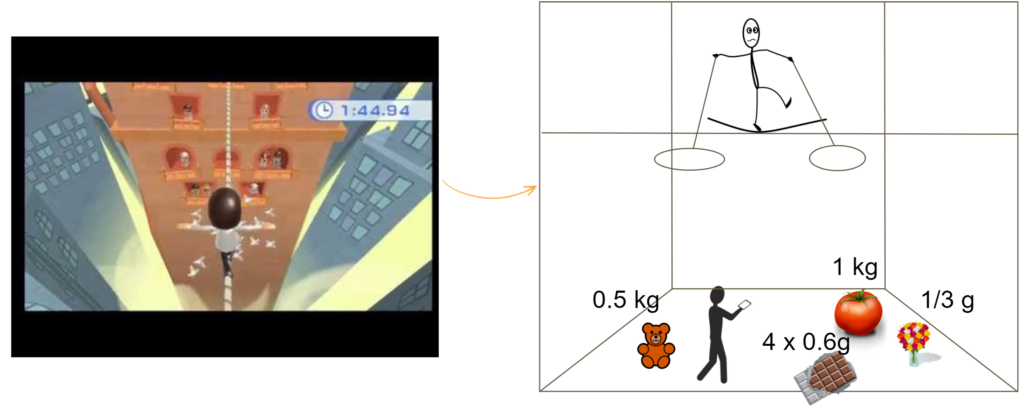
Tightrope design
For this tightrope idea, kids can walk around the room, pick up things with different weights and throw them up to the left or right plate of the little guy on the tightrope, to help them balanced. By doing this, they can do the math operations while having fun with AR.
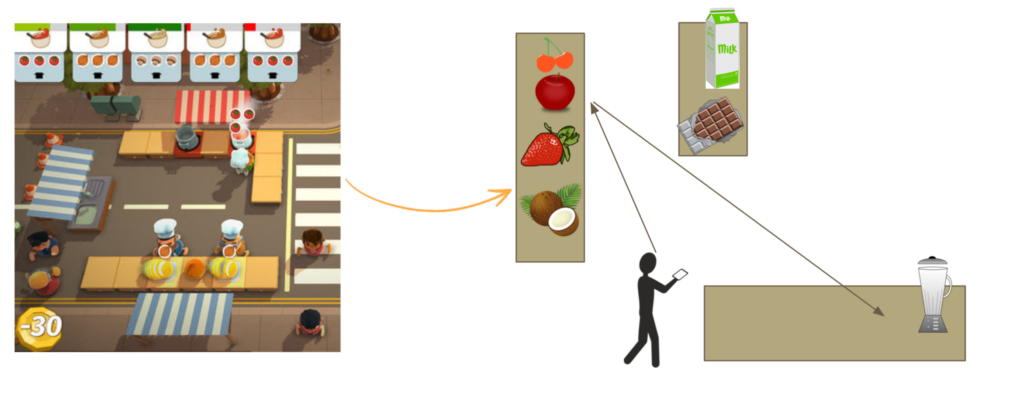
Fractions cooking design
For this cooking idea, kids can tap the screen to set up the kitchen environment, walk between tables to make foods and deliver foods to customers. They can see fraction, do fraction operations to make food according to the recipe.
The following is the quick demo made by our programmers to show how the kitchen is set up in. AR world and how people interact with the AR world
3. Character design
We also showed our character design to faculties and received several feedbacks.
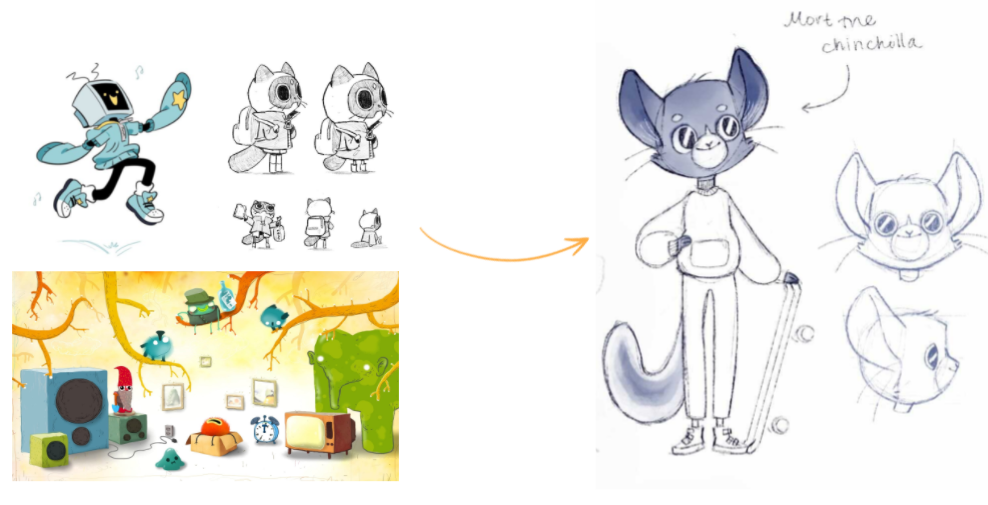
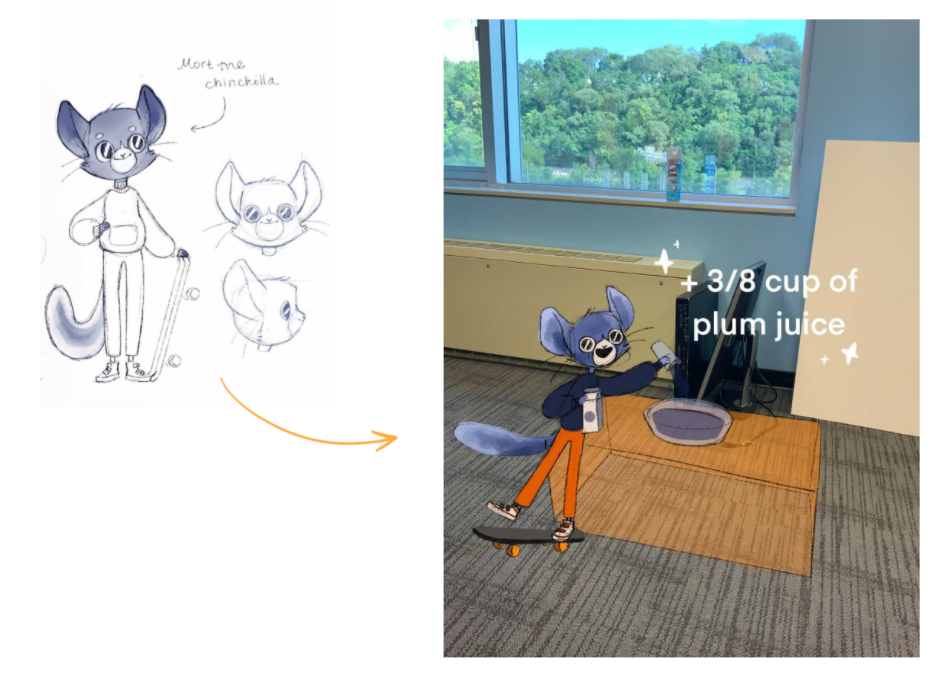
Feedback We Got
- Math walk on the ground is more compelling than we thought, with the simplicity and the problems that aren’t necessarily connected.
- However, turning to our game proposals, they were not that interested. For example, the looking up and down mechanism in Tightrope game may be a problem (or it may be very compelling).
- The feedback from Jesse Schell was really thought-provoking. He says it doesn’t need to be a game. A toy offering fun experience involving math is enough for the kids.
- Most importantly, we need to make decisions on the use case in the absence of strict guidelines from the client (how many kids, space needed, time limit, indoors or outdoors, things like that).
Quick Change of Direction!
Therefore, our team had a quick discussion after the Quarter and we decided that we were going to make a Buffet of Games, just like Math Walks.
Moreover, we still want to have Walk concept in our game, so we thought up two ways to do that. Instead of embedded walking inside the game, We decided to have kids walking between games.
- Some of the games can be played on desk, other games needs larger space, and should be played on the ground.
- Having QR code or markers on different desks in the classroom. Teachers can put the QR code or markers on tables and decorate the classroom beforehand and let children walk around scan the code and play the game.

Since the two games we presented in the Quarter is too heavy and large for programmers to do and not match with our Buffet of Games direction, we did another Brainstorm.
We looked through the math walks questions to get inspirations for the game experience. It’s much easier for us to do the iteration based on successful Math Walks than thinking up math ideas by ourselves. We looked through 19 math walks ideas, evaluated them from tech aspect, art aspect and difficulty for children. Finally, we decided that Net Game is the first to go.
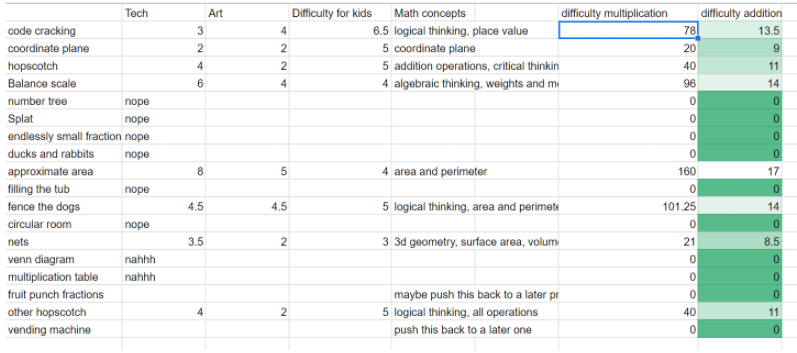
Meeting with Teachers
1. Meeting with John Balash teachers
Teachers visited our project room right before quarters! We showed them our tech demo and asked them for math concepts. They thought fractions and geometry problems in 3 dimensions were good fits and brought up achievements and a levelup progression system as motivating. BTW, They loved the character!
2. Meeting with Olivia
We had Katie and Olivia who are both in 4th/5th grade working with special ed students who have a grade level curriculum. We did some jamboard based Q&A, and open ended conversation. Landed on some logistical answers- time it would take, classroom layout, teacher role in the experience, playtesting. And some design answers and things we need to keep in mind for student success and motivation!
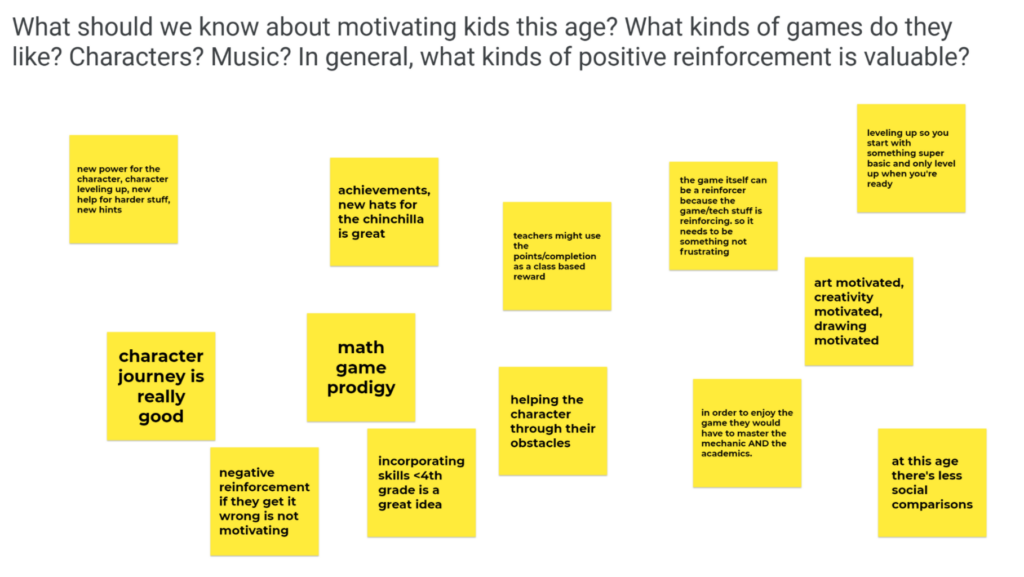
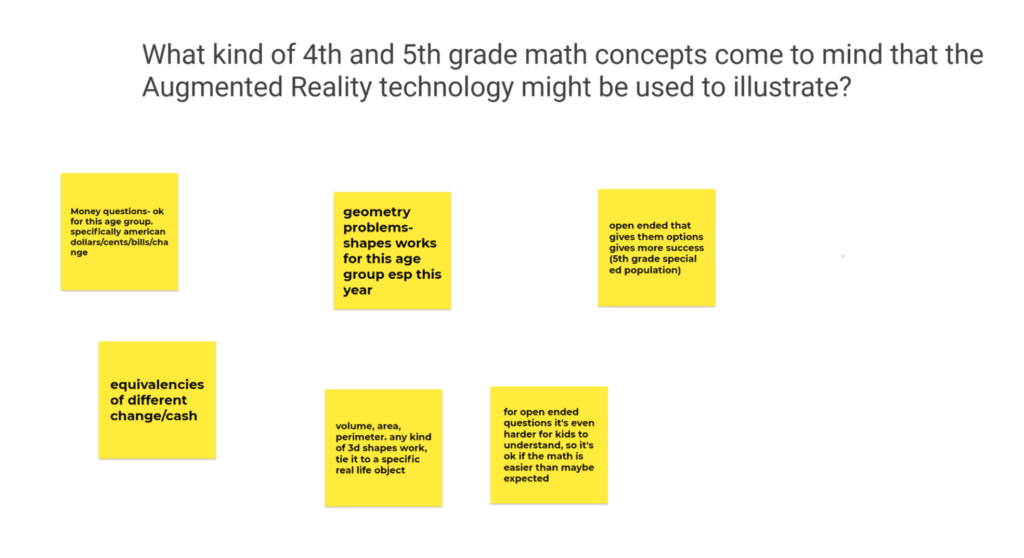
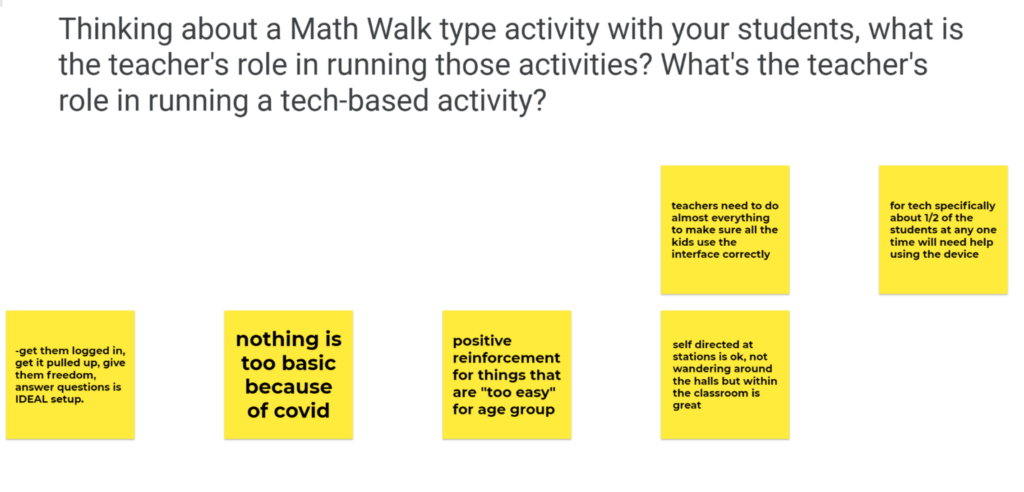
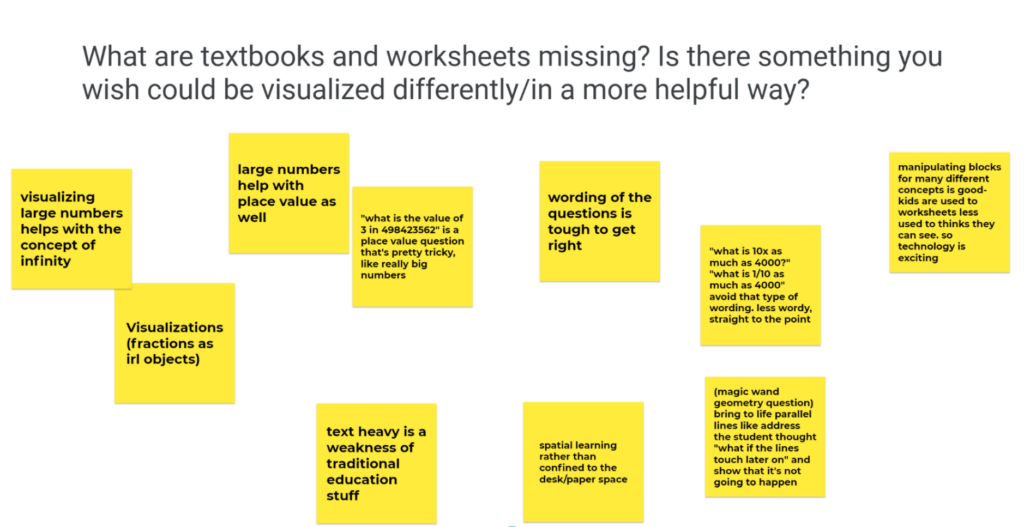
3. Themes from teacher meeting
- Kids in our target audience have fallen very behind both curriculum and tech use wise because of COVID. We need to make sure that our game does not frustrate them and gives them opportunities to succeed at the very start. In order to make the game good, the kids have to be able to master the mechanics AND academics.
- Keep our questions light on text, the more text there is the more confused they get
- They’re motivated by creative opportunities, earning aesthetic rewards, relationships (with character and each other). Technology use itself is inherently motivating
- Need to emphasize real-world applications/examples
4. Meeting Lou in person
After meeting Lou in person we got a sense that there’s a use case for whatever design constraints we might use. Therefore we will try to design both tabletop and floor based experiences
It will take a long time to schedule playtesting in a classroom such as Olivia’s, though Covid can change plans at the last minute. So testing with John Balash and the WLU local elementary is going to be more crucial.
And our math book library is growing!
